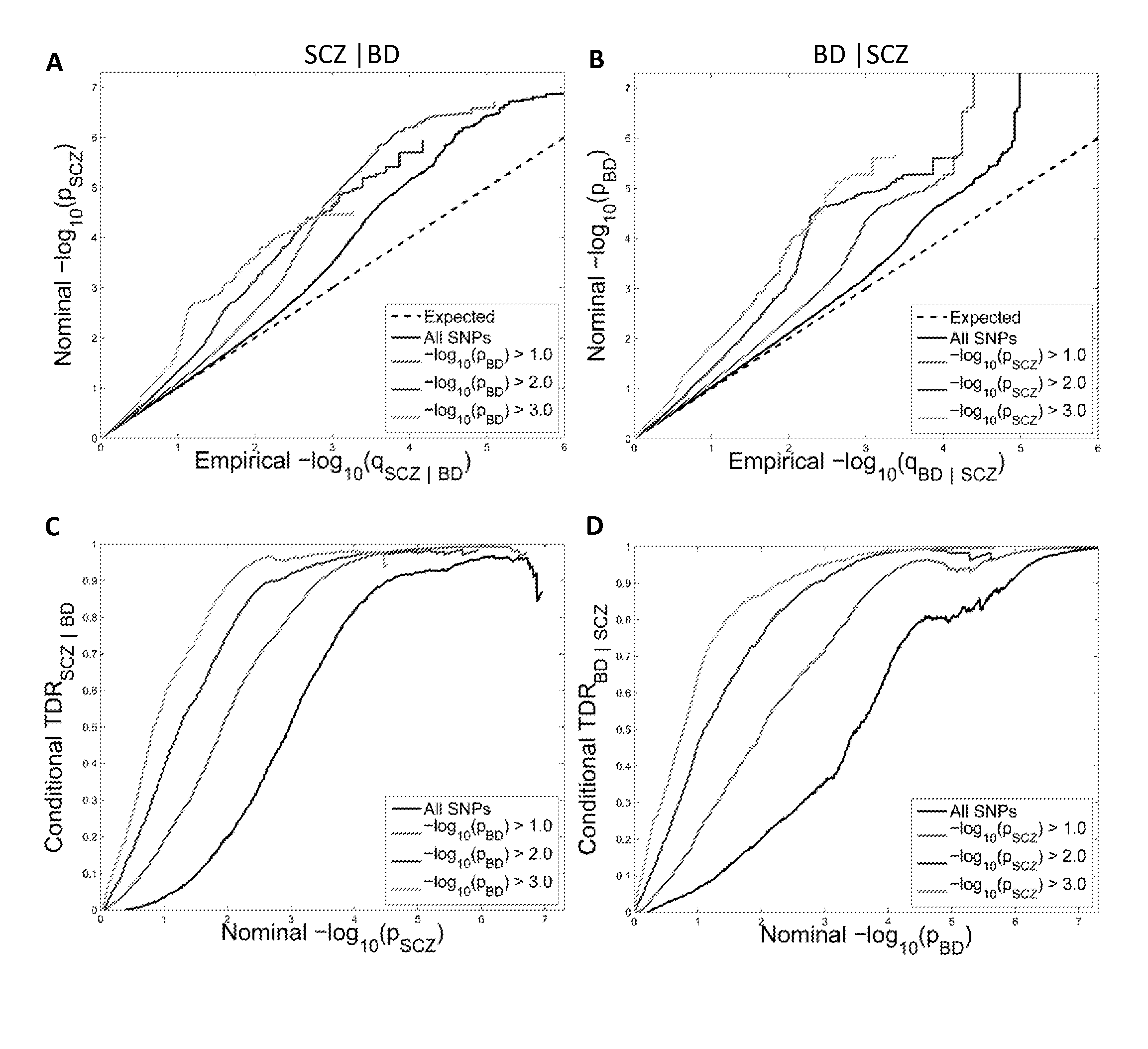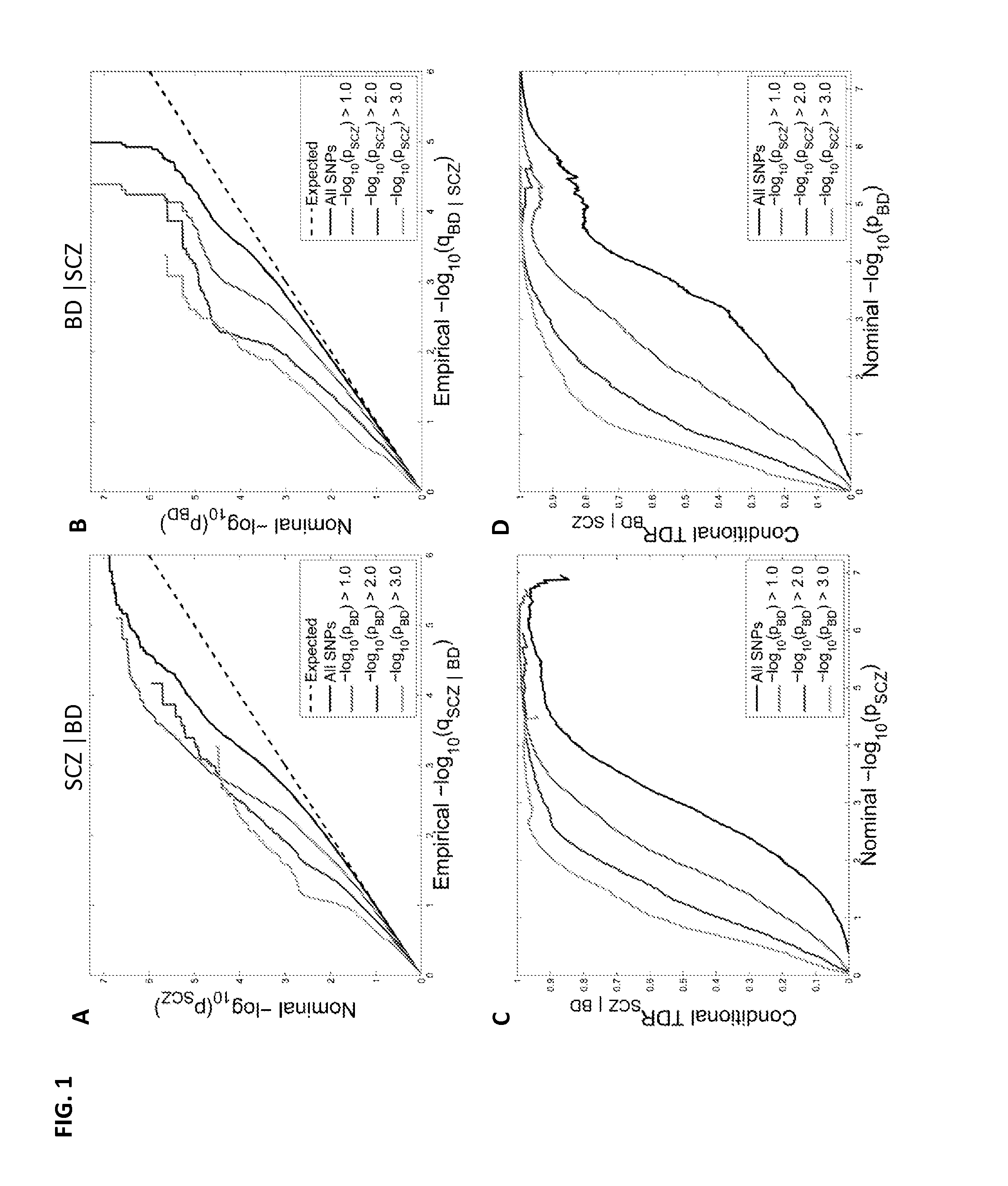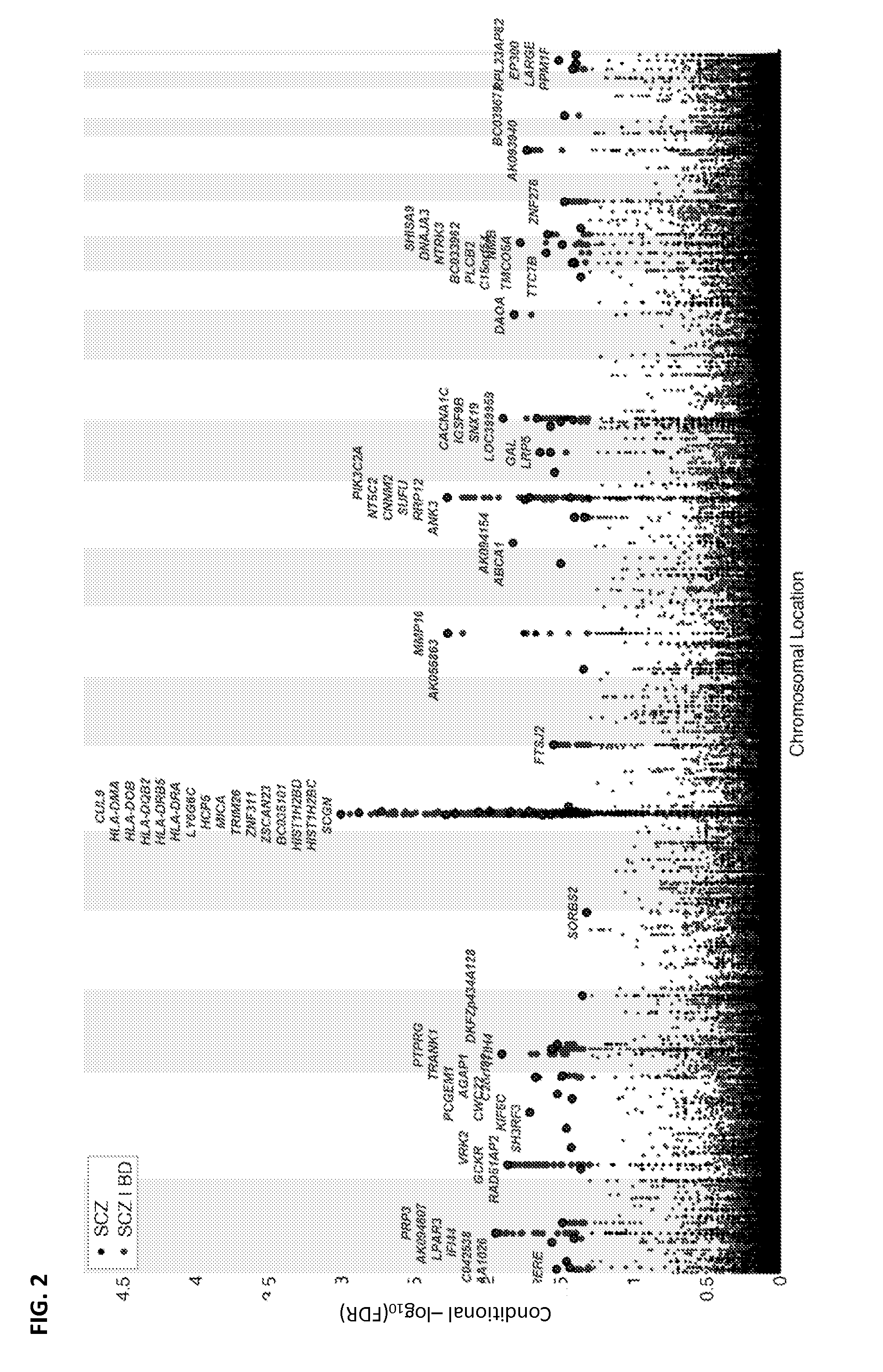Systems and methods for identifying polymorphisms
a polymorphism and polymorphism technology, applied in the field of systems and methods for identifying polymorphisms, can solve the problems of large number of snps that are likely to have associations too weak to be identified with the currently available sample size, and fail to explain a large proportion of the heritability of most complex phenotypes studied, so as to improve treatment effect and predict diseas
- Summary
- Abstract
- Description
- Claims
- Application Information
AI Technical Summary
Benefits of technology
Problems solved by technology
Method used
Image
Examples
example 1
Materials and Methods
[0125]Ethics Statement
[0126]The relevant institutional review boards or ethics committees approved the research protocol of the individual GWAS used in the current analysis and all human participants gave written informed consent.
[0127]Participant Samples
[0128]GWAS results were obtained in the form of summary statistics p-values from the Psychiatric GWAS Consortium (PGC)—Schizophrenia and Bipolar Disorder Working Groups. The schizophrenia (SCZ) GWAS summary statistics results were obtained from the PGC Schizophrenia Work Group[12], which consisted of 9,394 cases with schizophrenia or schizoaffective disorder and 12,462 controls (52% screened) from a total of 17 samples from 11 countries. Semi-structured interviews were used by trained interviewers to collect clinical information, and operational criteria were used to establish diagnosis. The quality of phenotypic data was verified by a systematic review of data collection methods and procedures at each site, and...
example 2
Materials and Methods
[0225]Genome-Wide Association Study (GWAS) Data
[0226]Fourteen phenotypes, body mass index (BMI) [30], height, waist to hip ratio [31](WHR), Crohn's disease [32](CD), ulcerative colitis [33](UC), schizophrenia [34](SCZ), bipolar disorder [35](BD), smoking behavior as measured by cigarettes per day [36](CPD), systolic and diastolic blood pressure [37](SBP, DBP), and plasma lipids [38](triglycerides, TG, total cholesterol, TC, high density lipoprotein, HDL, low density lipoprotein, LDL), were considered. Genome-wide association study (GWAS) results were obtained as summary statistics (p-values or z-scores) from public access websites (BMI, Height, WHR, TC, TG, HDL, LDL: GIANT consortium data files; IBD Genetics; Psychiatric Genomics Consortium; Center for statistical genetics and the University of Michigan; Geneva University Hospital—Tulipe Center For Cardiovascular Research), published supplementary material (SBP, DBP; The International Consortium for Blood Pressu...
example 3
MATERIAL and METHODS
[0355]Participant Samples
[0356]Complete GWAS results in the form of summary statistics p-values were obtained from public access websites or through collaboration with investigators (T2D cases and controls from the DIAGRAM Consortium and schizophrenia cases and controls from the Psychiatric GWAS Consortium (PGC)—Table 25). There was no overlap among participants in the CVD GWAS and the schizophrenia case-control sample (n=21,856), except for 2,974 of 12,462 controls (24%)137. The schizophrenia GWAS summary statistics results were obtained from the Psychiatric GWAS Consortium (PGC)13, which consisted of 9,394 cases with schizophrenia or schizoaffective disorder and 12,462 controls (52% screened) from a total of 17 samples from 11 countries. The quality of phenotypic data was verified by a systematic review of data collection methods and procedures at each site, and only studies that fulfilled these criteria were included. This involved nine key items: i) the use o...
PUM
 Login to View More
Login to View More Abstract
Description
Claims
Application Information
 Login to View More
Login to View More - R&D
- Intellectual Property
- Life Sciences
- Materials
- Tech Scout
- Unparalleled Data Quality
- Higher Quality Content
- 60% Fewer Hallucinations
Browse by: Latest US Patents, China's latest patents, Technical Efficacy Thesaurus, Application Domain, Technology Topic, Popular Technical Reports.
© 2025 PatSnap. All rights reserved.Legal|Privacy policy|Modern Slavery Act Transparency Statement|Sitemap|About US| Contact US: help@patsnap.com



